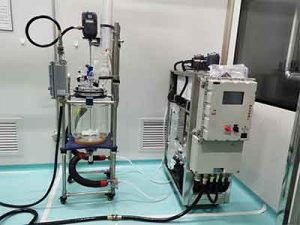glycol air cooler
Glycol Air Cooler: Efficient Low-Temperature Cooling Systems
Glycol air coolers are specialized HVAC units designed to cater to cooling needs in environments where temperatures may drop significantly below the freezing point of water. These systems combine the heat transfer efficiency of glycol with the cooling power of air to provide reliable and consistent cooling.

Composition of Glycol Air Coolers
Glycol air coolers use a mixture of glycol and water as the primary coolant. Glycol, an alcohol compound, is added to lower the freezing point of the mixture, allowing the system to operate in colder climates without the risk of freezing. The most common types of glycol used are ethylene glycol and propylene glycol, with the latter being non-toxic and suitable for use in the food and beverage industry.
Benefits of Glycol Air Coolers
Lower Freezing Point: The addition of glycol to water significantly reduces the freezing point, ensuring the system functions effectively in low temperatures.
Heat Transfer Efficiency: Glycol has good heat transfer properties, which, when combined with air cooling, allows for rapid cooling of the process or space.
Corrosion Resistance: Certain glycol formulations can help prevent corrosion in the cooling system components.
Environmental Compliance: Glycol-based coolants can be more environmentally friendly compared to traditional refrigerants.
Applications of Glycol Air Coolers
Glycol air coolers are used in a variety of applications, such as:

Industrial Processes: For cooling in manufacturing, food processing, and chemical industries where precise temperature control is required.
Commercial HVAC Systems: To provide cooling in large-scale commercial buildings, especially in cold regions.
Data Centers: To maintain optimal temperatures for server rooms and IT equipment.
Operation of Glycol Air Coolers
The operation of a glycol air cooler involves circulating the glycol-water mixture through a heat exchanger, where it absorbs heat from the process or space being cooled. The warmed glycol mixture is then cooled by air, either through natural convection or with the aid of fans, before being recirculated.
Selecting the Right Glycol Air Cooler
When choosing a glycol air cooler, consider factors such as:

Cooling Capacity: Ensure the system can meet the cooling demand of the application.
Glycol Type: Choose based on the specific application and safety requirements.
Mixture Ratio: Calculate the proper ratio of glycol to water based on the lowest operating temperature.
Energy Efficiency: Look for systems with high Energy Efficiency Ratios (EERs) to reduce operational costs.
Conclusion
Glycol air coolers offer a versatile and efficient method for achieving low-temperature cooling in various applications. Their ability to maintain low operating temperatures and efficiently transfer heat makes them invaluable in many industries. By carefully selecting the system components and glycol type, users can ensure optimal performance and reliability while minimizing environmental impact.
This article provides a comprehensive guide to glycol air coolers, discussing their composition, benefits, applications, and selection guidelines. It emphasizes the importance of using the correct glycol type and mixture ratio for optimal system performance and efficiency, ensuring readers can make informed decisions for their cooling system requirements.
Related recommendations
Features of Industrial Chillers
1304Features of Industrial Chillers Industrial chiller is a cooling water device that can provide constant temperature, constant current and constant pressure. The working principle of the chille...
View detailsIs it better to increase or decrease the flow rate of the water pump for a 20 ton chiller?
1107Is it better to increase or decrease the flow rate of the water pump for a 20 ton chiller? Excessive or insufficient flow rate of the water pump in an industrial chiller can have a cert...
View detailssmall water chiller price
396Understanding the Price of Small Water Chillers A small water chiller is a crucial piece of equipment for various applications, including industrial processes, medical equipment cooling, and ev...
View detailssistem water cooled chiller
850Industrial Process Water Chillers: Efficient Cooling for Industry Industrial process water chillers are an essential component in many manufacturing and industrial processes where precise tempe...
View details
 LNEYA Chiller
LNEYA Chiller







HelloPlease log in